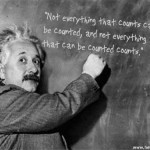 Social Media Marketing is still so incredibly new, that there are not a lot of standards, no real consensus as to how it works, and an increasingly annoying number of debates about who will “win”, who will “lose”, who will be acquired by Google, etc.
Social Media Marketing is still so incredibly new, that there are not a lot of standards, no real consensus as to how it works, and an increasingly annoying number of debates about who will “win”, who will “lose”, who will be acquired by Google, etc.
Amidst all of this there is very little clarity as to how to properly market within the current stable of social media options, why to do it, and how to measure success as you do it.
These days almost every marketing investment, and certainly those on the web, are best optimized when they are measurable so that a business can tie back the time and effort spent and compare it to business results.
So how do you even begin to apply metrics to social media marketing?
Part of the problem lies in the definition of social media marketing itself. Obviously, social networks provide a great way to keep in touch with individuals within a platform that provides credibility and emotional value for the participants. This has value for individuals, clearly, and has value for marketers simply because it allows them additional insight into the thoughts, needs, and curiosities of their customers. This is useful, but it doesn’t necessarily mean that social media is “media” that can be leveraged for mass communication way that the other media are, nor does it mean that you should apply similar metrics to it.
If we accept that a business is using social media as a means of distributing a marketing message, another common problem is that marketers have siloed their social media efforts, with some still engaged in confusion as to where the expertise even belongs… should it be handled by the PR team, the advertising team, or some new department specializing in this area and integrating with the others?
This answer may be different for every business, but the best place to start is to clarify the business goal that is being pursued with social media marketing, and to be honest about how you are really using it.
For example, if your social media campaign consists of occasional Twitters and Facebook updates, you aren’t really doing social marketing or viral marketing. You are simply engaging in PR through an interesting (and free) channel that is available to you on the web.
To measure the success of this type of effort you can simply look at it the way you would a brand advertising campaign, and count up the number of unique users who have viewed your Facebook profile, or followed you on Twitter. You can count up the number of times anyone has commented on a post or a link, and compare this “engagement metric” across different efforts. You can even find tools and utilize APIs from social media platforms to track the volume of chatter around particular keywords and collected data, demographic and otherwise, about social media participants.
If your goal is to get people to convert or perform specific action on a website, you can apply metrics traditionally used in direct-response advertising, such as click-throughs and conversions, and you can develop an ROI measurement based on the cost of the social media effort relative to the resulting actions. This is old-school, fundamental marketing, and it is simply taking advantage of a new channel that has gotten ridiculously popular, and is stunningly easy to use.
The most challenging and potentially valuable use of social media is an aspect that is truly new, which is the opportunity for viral marketing. Marketers that figure out how to build their brands through their customers’ own networks are really using social media for its maximum potential. Metrics that are useful to measure viral marketing are things like the number of connections held by visitors who were touched by your effort, and stats like how many “re-Tweets” your content received, or how many subscribers to an RSS feed came through a particular page on your site.
The boring way to think about social media is to simply treated as another channel that’s available to you in addition to regular advertising, PR, direct mail, and anything else you are doing.
At minimum, if you are a business interested in measuring ROI, you should attempt to track the effect of your social media efforts and compare it to other messaging channels which are absorbing your time and business resources.
At maximum, social media efforts can be leveraged in pursuit of viral efforts which can achieve incredible results. Just as importantly, social media can be used to increase engagement and trust with your customers. This can’t always be measured, but it is certainly worth the effort, and may yet prove to be the best use of these platforms.











hello!This was a really quality post!
I come from roma, I was fortunate to look for your blog in google
Also I obtain a lot in your subject really thank your very much i will come later